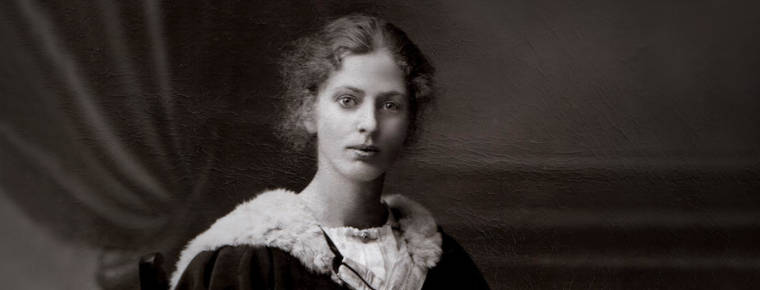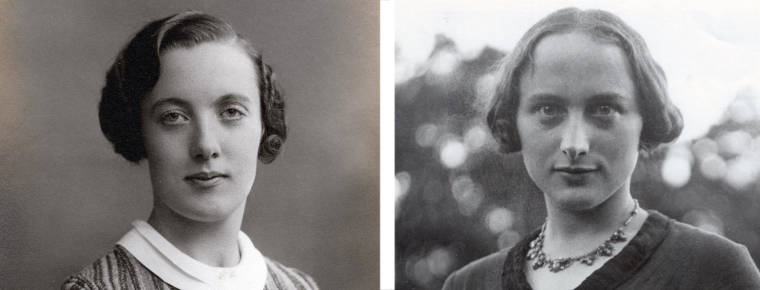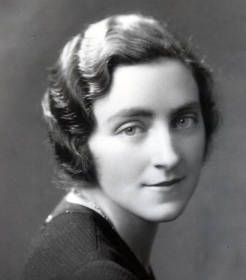The final frontier

Ireland’s first 100 women solicitors
The enactment of the Sex Disqualification (Removal) Act 1919 was the catalyst for the admission of women to the legal profession.
December 1919 was a landmark in the history of the legal profession. The Sex Disqualification (Removal) Act 1919 was enacted – the culmination of many years of lobbying by women seeking to enter the professions.


The history of attempts by women to enter the legal profession in England is well documented. It culminated in 1913, when Gwyneth Marjorie Bebb, Maud Ingram, Karin Costelloe and Lucy Nettlefold took a case against the Law Society of England and Wales (Bebb v Law Society of England and Wales) claiming that they should be allowed to sit its preliminary examination.
The case was unsuccessful both in the Chancery Division and the Court of Appeal. The court determined that the appeal should fail and that, if there were to be a change in practice, it would have to be brought about by parliament, which duly happened some years later.
The outcome of the Bebb case would have been watched eagerly by a small group of Irish women, some of whom were already working in family law firms, and other younger women students with aspirations to become lawyers.
In particular, Helena Mary Early, a Dublin woman, then in her mid-20s and already working in her brother’s firm, must have felt a degree of impatience with the slow progress of change.
In Belfast, Mary Dorothea Heron was embarking on a classics degree at Queen’s and, no doubt, had the intention to qualify as a solicitor and join her brother’s firm.
In 1919, after the Sex Disqualification (Removal) Act became law, both women went on to become ‘firsts’ – Mary Dorothea Heron, the first woman to be admitted to the Roll of Solicitors, and Helena Mary Early, the first woman to apply for a practising certificate in the then newly formed Saorstát Éireann.
Although they both commenced their apprenticeships within a few months of each other in 1920, they qualified in 1923 into a radically different post-partition landscape, with two legal jurisdictions.
Into the archives
In celebration of the centenary of the Sex Disqualification (Removal) Act, a steering group (comprising representatives from the Irish Women Lawyers’ Association, the Bar Council, the King’s Inns, the Law Society, and other professional bodies) was formed to plan a series of events to mark the anniversary.
A gala dinner in the King’s Inns on 30 November 2019 marked the first official event, at which Prof Mary McAleese (former President of Ireland) gave the keynote address. Her speech was a glowing tribute to these innovative lawyers, particularly those who had qualified during the first decade following the enactment of the legislation.
As part of that initiative, the Law Society’s library took a look back through the institutional archives in order to identify the first 100 women solicitors to qualify. The Society’s hand-written roll-books provided the source for the names of the first 100 women who qualified (between 17 April 1923 and 7 July 1950).
This data was then cross-referenced with the Register of Apprentices to discover whether the solicitors were graduates, the lengths of their apprenticeships, and where they had served. The list was published in October 2019, with an invitation to solicitors to tell us more about the lives of these pioneering women.
This article can only provide a taster of what we discovered. The digital archive (www.lawsociety.ie/library/) contains fuller biographies of over 40 women, as well as photographs, where available.
The first ten
We already knew some information about the early women, in particular, the first three women – Mary Dorothea Heron, Helena Mary Early, and Dorothea Mary Browne. These women were admitted to the Roll in 1923. Eight more were admitted in the 1920s. It would appear that most of the women came from family firms based in Dublin, Cork, Monaghan, Mayo, Louth and Sligo. Some of these women continued in practice for long periods, notably Mary Dorothea Heron, Helena Early, and Dorothea Browne O’Reilly.
Berenice Tarrant qualified in 1929 and practised in the family firm in Sligo before moving to McCann FitzGerald, Roche & Dudley in Dublin – later working with Nathaniel Lacey & Co, and finally PD Gardiner, until she retired.
Others, Eleanor Dulcie Scholefield, Maureen McDowell and Clohra MacBride, left practice after a short period to pursue family and other commitments. Eleanor Dulcie Scholefield was the daughter of Robert Scholfield (solicitor) at Moore, Kiely and Lloyd, who died in 1926, leaving his interest in the firm to his daughter who qualified in 1928. She remained in practice until 1934, before moving to England where she joined the WRENS after World War 2 broke out.
Adelaide Quin from Dunleer, Co Louth, was the eighth woman to qualify as a solicitor. She took over her father’s practice, T Gerrard & Co, Ardee, after his death in 1938, and continued in practice until 1960.
The final woman to qualify in the 1920s was Irene McInerney from Loughrea, Co Galway, who practised until her marriage in 1932.
Fifty and counting
The 1930s brought a further 41 women solicitors. Mary Ursula Kearns practised for a short period with James O’Connor & Co, Dame Street, Dublin.
Catherine Tynan qualified in November 1930 and became a highly respected solicitor in Limerick, who continued to practise right up until the time of her death.
Edith Keller achieved distinguished academic success at TCD, where she was awarded LLB and LLD degrees, after which she qualified as a solicitor in January 1931. She continued to practise in Whitney Moore & Keller until her death in 1948.
Finola Foley (née O’Connor) qualified in January 1931 and was the first female solicitor in Cork City.
Norah O’Shiel was the 17th woman to qualify. She was apprenticed to Vincent P Shields, Loughrea, and practised for many years in Athenry.
Margaret Gibbons was the first woman to qualify in Co Offaly in June 1931, while Mary Neilan became the first female solicitor in Roscommon a couple of months later.
Mary Eugenia Harte from Kilkenny qualified as a solicitor in 1934 and practised with her father James Harte and her brother John A Harte.
The story of Waterford-born Irene Emilie McCoy’s short life and legal career is recounted in an article by historian John Lucey in the journal of the Waterford Archaeological Society, Decies, and is reprinted in the digital archive.
Bridget Winifred Hannon, the eldest of ten children, qualified in 1935 and worked with Henry St John Blake, solicitor, in Galway for a number of years until her marriage.
Another west-of-Ireland woman, Kathleen Durcan, was apprenticed to John McHale in Castlebar. She qualified in 1935. Kathleen was a sister of Circuit Court Judge John Durcan, and a sister-in-law of Clohra and Sheila MacBride (see below). She married William Montgomery, solicitor.
Meath got its first female solicitor in 1936, when Marie Reilly, from Effernock, Trim, was the first of three members of the Reilly family of eight children to qualify. She ran the practice for a short period with her younger brother Frank, following the untimely death of their father
in 1941.
Stella Marion Barclay Webb qualified in 1936, and practised until the mid-1980s. She was a member of the Religious Society of Friends (Quakers) and was pivotal to the founding of The Haven, a refugee home in Dublin that welcomed WW2 refugees to Ireland. She was also very involved in the Irish Campaign for Nuclear Disarmament.
Sheila MacBride served her apprenticeship with her older sister Clohra, with whom she practised post-qualification in 1937, until her marriage to the then junior barrister, John Durcan, who would later become president of the Circuit Court.
Jane Teresa McGowan was the ninth of 11 children from Balbriggan, Co Dublin. She graduated from UCD in 1936 and qualified as a solicitor in 1939. Jane (Jenny) practised for a short while until the birth of her first child, and resumed practising in 1969 upon the death of her husband.
Elizabeth Kettle was the daughter of Mary Sheehy Kettle and Thomas Michael Kettle, the barrister, economist, writer and Home Rule politician, who was killed at the Somme in 1916. She qualified in February 1939 and was employed as an assistant solicitor in the Finance Solicitor’s Office in Dublin.
1940s – hitting 100
By the beginning of 1940, a total of 51 women had qualified as solicitors. Brigid Hogan from Kilricle, Co Galway, was the only woman to qualify in 1940 – she worked with Arthur Cox until her retirement.
Moya O’Connor, Swinford, Co Mayo, qualified the following year, and practised with her father, brother and nephews in the firm of P O’Connor & Son. She was deputy coroner for east Mayo for over 40 years, and was an active member of many clubs and societies throughout the county.
Eithne McMullin had a long career in private practice, working in Donegal, Sligo and Dublin, and as law agent for the Irish Nationwide Building Society until her retirement in 1985.
Lucy Fagan qualified in 1941 and practised for five years before spending a period carrying out refugee work in Germany. In 1950, she emigrated to South Africa where she became the first woman to be admitted as a solicitor/barrister in Northern Rhodesia.
Mary (Maureen) Teresa Corboy, now in her 101st year, qualified in 1942 and was offered a job with the Crown Colonial Legal Service in Hong Kong – until they discovered she was a woman and promptly withdrew their job offer! Undeterred, she continued to practise in Ireland until 1951, when she married Cornelius Sheehan, solicitor. Her friend, Mary Winifred Thornton, now in her 100th year, qualified a few weeks before her, having served her apprenticeship with Alfred G Thornton in Castlebar.
Joan M Smith (née Macaulay) qualified in January 1943 and practised most of her working life in Cavan town. She was one of the longest-serving solicitors in the country (see obituary, Gazette May 2016, p55).